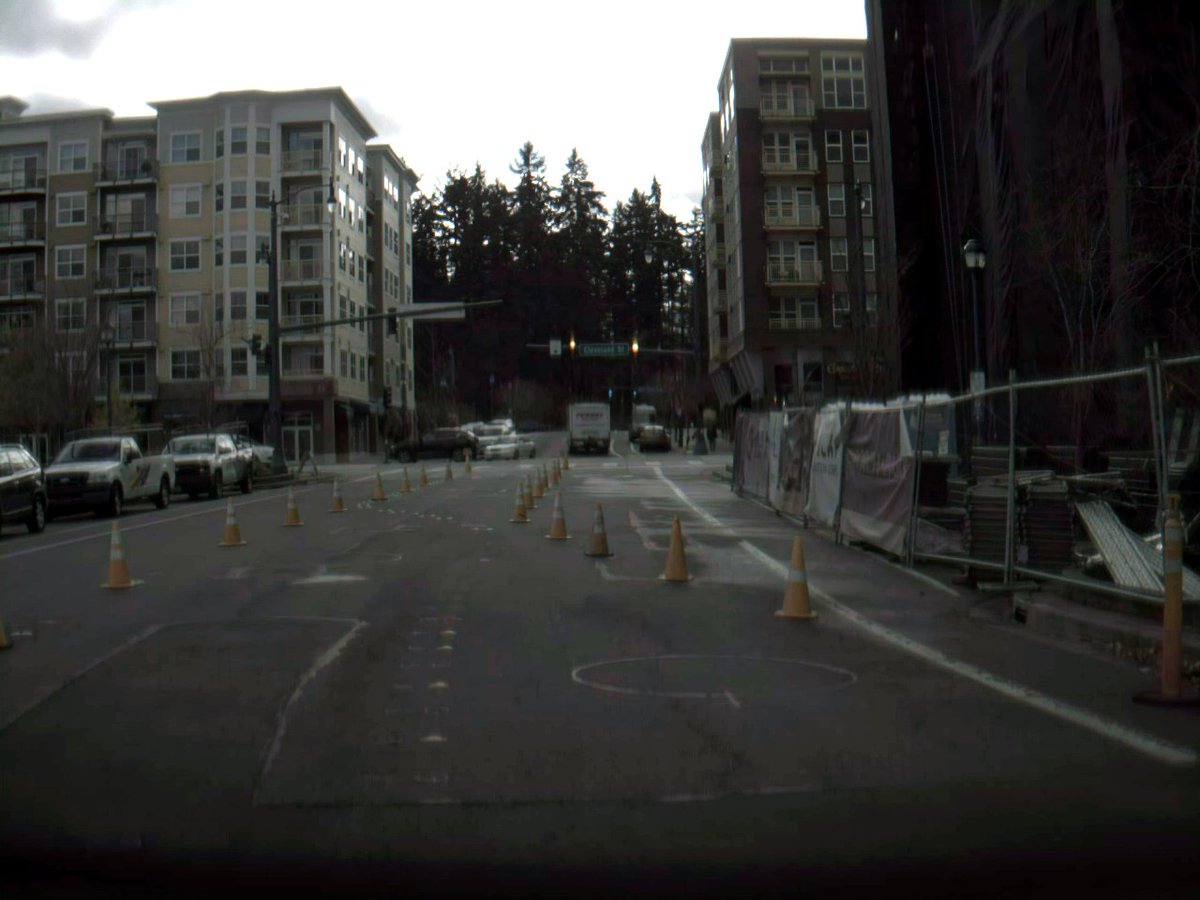Curious what Tesla means by upreving their static obstacle neural nets?
Lets see how the Tesla FSD Beta 10.5 3D Voxel nets compare to the nets from two months ago.
The new captures are from the same area as the old ones so we can directly compare the outputs
1/N
Lets see how the Tesla FSD Beta 10.5 3D Voxel nets compare to the nets from two months ago.
The new captures are from the same area as the old ones so we can directly compare the outputs
1/N
This first example is a small pedestrian crosswalk sign in the middle of the road. It's about 1 foot wide so it should show up as 1 pixel in the nets.
Under the old nets it shows up as a large blob with an incorrect depth. Under the new nets it's much better.


Under the old nets it shows up as a large blob with an incorrect depth. Under the new nets it's much better.



Under the old nets the posts show up a huge blobs and disappears when the car gets close to it. The probabilities seem fairly consistent no matter how far they sign is away even though up close they should be more confident.
fn.lc/s/depthrender/…
fn.lc/s/depthrender/…
Under 10.5 the post has a much more accurate depth up close and the post now shows up along side the car and behind it
The confidence seems to match reality much better as the predictions have a higher probability as the car gets closer
fn.lc/s/depthrender/…
The confidence seems to match reality much better as the predictions have a higher probability as the car gets closer
fn.lc/s/depthrender/…
Looking at an intersection near a park we can see that there's a huge difference in clarity.
It seems like Tesla has optimized the training data to better isolate the sidewalks from the ground so they more consistently show up
Old: fn.lc/s/depthrender/…

It seems like Tesla has optimized the training data to better isolate the sidewalks from the ground so they more consistently show up
Old: fn.lc/s/depthrender/…


The light poles also have much more accurate depth. Before they would have the same issue of having the right width but show up as being 10+ ft deep
New: fn.lc/s/depthrender/…
New: fn.lc/s/depthrender/…
I don't have an old capture of these cones to compare but they seem plenty distinct and good enough to drive on. The predictions are stable next to and behind the car
Of note is that the cones merge together into a single line further way from the car


Of note is that the cones merge together into a single line further way from the car



Since I suspect this training data is automatically generated, the repetitive colors and patterns of the cones may be confusing their offline algorithm into thinking it's one solid object.
I'm not sure it matters for driving given their close spacing
fn.lc/s/depthrender/…
I'm not sure it matters for driving given their close spacing
fn.lc/s/depthrender/…
Here's an example of making a right turn into a narrow road with hard curbs on both sides. The car is outputting pretty accurate estimates of the curbs through the tight corner
Seems like my added car model is a tad too far forward compared to reality
fn.lc/s/depthrender/…
Seems like my added car model is a tad too far forward compared to reality
fn.lc/s/depthrender/…
It's pretty clear that there's been some big though incremental improvements to these nets.
The recent FSD patch notes mentioning the increased number of clips as well as improvements to the training data generation (autolabeler?) seems to be paying off
The recent FSD patch notes mentioning the increased number of clips as well as improvements to the training data generation (autolabeler?) seems to be paying off
It's not clear if this is part of the autolabeler given there's no real labels here but if it's a shared system for managing the clips it may benefit both
I'm also curious if there's been any model architectural changes helping though the patch notes haven't mentioned that
I'm also curious if there's been any model architectural changes helping though the patch notes haven't mentioned that
• • •
Missing some Tweet in this thread? You can try to
force a refresh


















